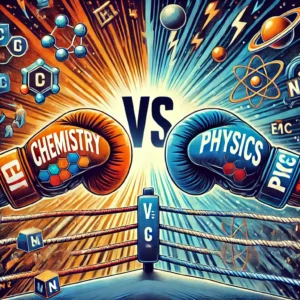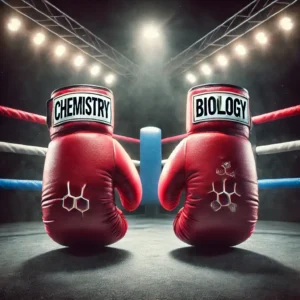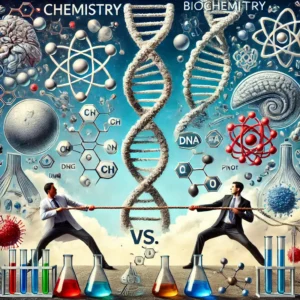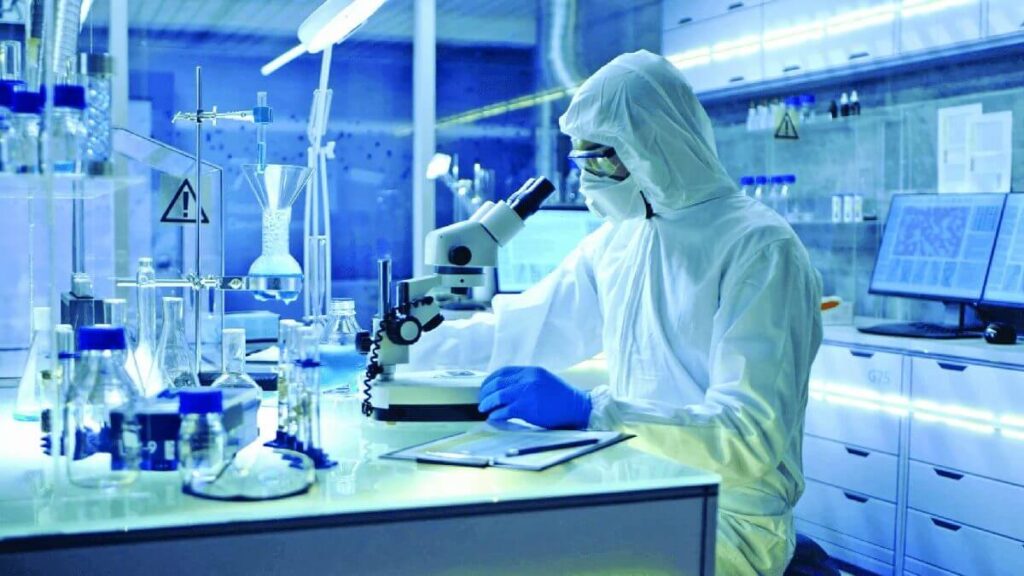
For all these problems, you can use our Relative/Average Atomic Mass Calculator to quickly compute the answers. However, if you’d like to see a step-by-step breakdown of how each problem is solved manually, check out the detailed explanations provided below each question.
1. Problem # 1
Chlorine -35 forms 75% of the total mass of chlorine and chlorine-37 forms 25%. Calculate the relative atomic mass of chlorine.
Solution
Consider a sample containing about 100 atoms of chlorine:
75 atoms will each have a mass of 35, which means that their total mass will be 35 X 75
And 25 atoms will have a mass of 37, which means that their total mass will be 37 X 25
The average mass of the chlorine atom will be:
RAM = (Mass of chlorine-35 X Relative abundance)/100 + (Mass of chlorine-35 X Relative abundance)/100
= (35 x75)/100 + (37 x25)/100
= (2625+925)/100
=35.5
As you can see, the RAM is close to the mass number of the most abundant isotope (chlorine -35).
2. Problem # 2
An element X, consist of three isotopes with mass number of 22, 24, and 25 with percentage abundance of 89.6%, 6.4% and 4.0% respectively. Find the relative atomic mass of element X.
Solution
RAM = (Mass of Isotope 1 x Relative abundance)/100 + (Mass of Isotope 2 x Relative abundance)/100 + (Mass of Isotope 3 x Relative abundance)/100
RAM =( (89.6 x 22) + (6.4 x 24) + (4.0 x 25))/100
RAM of X = 22. 2
3. Problem # 3
Natural Boron exists in form of two isotopes: Boron -10 and Boron -11 with relative abundance of 19.91% and 80.9% respectively. Calculate the RAM of Boron.
Solution
RAM of Boron = (19.91 x10)/100 + (80.09 X 11)/100
=10.81
4. Problem # 4
Neon gas exists naturally as three isotopes, neon -20, neon -21, and neon -22. In a sample of neon gas, the relative abundance of the three isotopes are 90.2%, 0.26% and 8.82% respectively. Calculate the relative atomic mass of neon.
Solution
RAM = {(20 X 90.92) + (21 X 0.26) + (22 X 8.82)}/100
=2018/100
=20.18
5. Problem # 5
Naturally occurring gallium occur as Gallium -69 and Gallium -71 in the ratio of 3: 2 respectively. Calculate the RAM of Gallium.
Solution
RAM of Gallium = (69×3)/5 + (71 x2)/5
= 69.8
6. Problem # 6
Bromine consist of two isotopes: 79Br and 81Br. If its RAM is 79.99 determine the percentage relative abundance of each isotope.
Solution
Let the relative abundance of the 79Br be Y
Relative abundance of 81Br will be (100 -Y)
So: {(79 x Y) + 81 (100- Y)}/100 = 79.9
79Y + 8100- 81Y = 79.99 X 100
-2Y = 7999-8100
-2Y = -101
Y = 50.5%
So abundance of 79Br will be 50.5% and 81Br will be 100-50.6 = 49.5%
7. Problem # 7
Naturally occurring boron consist of 80.22% 11B and 19.78% of another isotope YB. To account for the RAM of 10. 81, determine the atomic mass number of the other isotope.
Solution
RAM = {(80.22 x 11) + (19.78 x Y)}/100 = 10.81
= 882.42 + 19.78Y = 10.81 x 100
=882.42 + 19.78Y = 1081
=19.78Y = (1081- 882.42)
= 19.78Y =198.58
Y = 198.58/19.78
Y = 10. 04
So atomic mass number of YB will is 10
8. Problem # 8
The relative atomic mass of element Y which consist of isotopes 20Y and 22Y is 20.2. Calculate the percentage of atoms in the isotopic mixture.
Solution
Let the % abundance of 20Y be P
Then % abundance of 22Y will be (100 -P)
{(20 X P) + 22 (100-P)}/100 = 20.2
20P + 2200 -22P = 2020
-2P = – 180
P = 90%
Therefore % abundance of 20Y is 90% and 22Y is 10%.
9. Problem #9
An element P has two isotopes with relative abundance of 65% and 35%. If the mass number of the two isotopes is Y and 31 respectively, find the mass number represented by Y given that the relative atomic mass of element P is 30.
Solution
RAM =30
30 = {(65 X Y) +(31 X 35)}/100
65Y +1085 = 30 x100
65Y+ 1085 =3000
65Y = 3000 -1085
65Y = 1915
Y = 1915/65
Y = 29
10. Problem #10
Lithium has two isotopes with mass number 6 and 7. If the relative atomic mass of lithium is 6.94, determine the percentage abundance of each isotope.
Solution
Let the % abundance of the 6Li be Y
Then % abundance of 7Li will be (100-Y)
RAM = 6.94
So, {(6xY) + 7(100-Y) }/100 = 6.94
6Y +700 – 7Y = 6.94 x 100
6Y + 700 -7Y = 694
6Y-7Y = 694-700
-Y = – 6
Y = 6
So e % abundance of the 6Li is 6% and 7Li is (100-6) = 94%
Important Facts to Know Before Attempting Average Atomic Mass Problems
- Relative atomic mass (RAM) is the mass of an atom when compared to the mass of a standard/reference atom. Currently, the carbon-12 isotope is used as the reference atom.
- RAM of an element is therefore the average mass of an atom of the element when compared with the one twelfth of the mass of carbon -12 isotope.
RAM of an element = (the average mass of one atom of the element) / (1/12 X the mass of a carbon-12 isotope)
- RAM is a ratio and therefore has no unit.
- Most elements appear in nature as a mixture of isotopes, which are simply atoms of the same element that have different numbers of neutrons in their nuclei and hence different mass numbers.
- The relative number or proportion of atoms of a particular isotope in a mixture of the isotopes of an element is called Relative Abundance.
- When calculating the average RAM of an element that exists as isotopic mixture, you must take into account the abundance of the isotopes— and that’s essentially what all the problems and their respective solutions here are based on.



